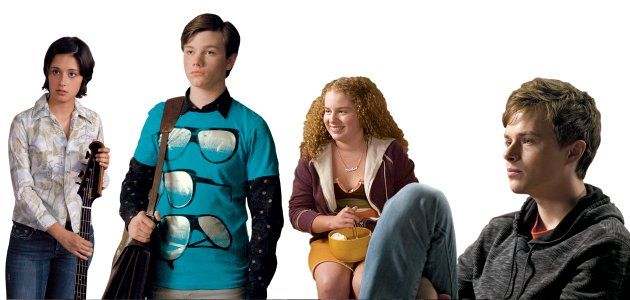
You may have heard about (or seen) the city-council meeting in Ft. Worth, Texas, that took a turn for the viral. Councilman Joel Burns used his time with the microphone to deliver a tearful elegy for the gay teens who have committed suicide recently, revealing in the process that he too had been bullied as a teenager because he is gay. The video is the latest in a program organized by author Dan Savage, who mobilized the gay community to take part in a project called It Gets Better, in which successful, settled adults record YouTube clips to encourage gay youth to stick around for the rainbow after the storm. It's a laudable and moving response, but for gay teens, a lack of role models onscreen doesn't seem to be the issue.
The Gay and Lesbian Alliance Against Discrimination, which is usually all too eager to heap scorn on media images it finds wanting, released a study last month that actually showed gains in the number of gay and lesbian characters on television, including teenagers. There is, of course, Kurt, the preening he-diva of Glee, which also includes experimenting cheerleaders Santana and Brittany. Friday Night Lights features a punk-rock girl named Devin, and Weeds had a spunky, plus-size model named Isabelle. This season on 90210, moneyed tennis phenom—and ladies' man—Teddy is slowly discovering that he's gay, and the virtuosic therapist on In Treatment will treat Jesse, a troubled gay teen who deals prescription drugs and uses sex to escape from his emotions. Each of them deals differently with the unfortunate fact that differences are like blood in the water for the immature and insecure. Devin hides her sexuality rather than be known as "the lesbian" of her high school, while Isabelle is out and proud, willing to stand up to the bullies—even though the bully is her mother. Kurt is a stylish charmer who struggles to express his interest in his classmates without alienating them; Jesse is a confrontational brat who makes his own therapist fidget.
If only there were such nuance and breadth in the portrayal of the bad guys. While it's critical to teach gay teens that suicide is not the answer to their pain, the teens themselves are, frankly, not the source of the problem. The way to stop the bullying of gay teenagers is to focus on the potential perpetrators. If we believe that presenting realistic portraits of gay teens can help them escape from isolation and despair, it stands to reason that viewers might learn something from bullies drawn with depth, too. Who would see themselves in the slushie-chucking meathead jocks on Glee? Sure, we root for their comeuppance—they're predators who lack any compassion or remorse. But life is more complex than that. We've learned recently that bullies are often simply callous people who do bad things without considering how far they can reverberate. If TV (and YouTube) now regularly shows gay teens that life gets better, it's time to help would-be bullies see the guilt and remorse that comes from making someone's life feel worse.
Uncommon Knowledge
Newsweek is committed to challenging conventional wisdom and finding connections in the search for common ground.
Newsweek is committed to challenging conventional wisdom and finding connections in the search for common ground.





